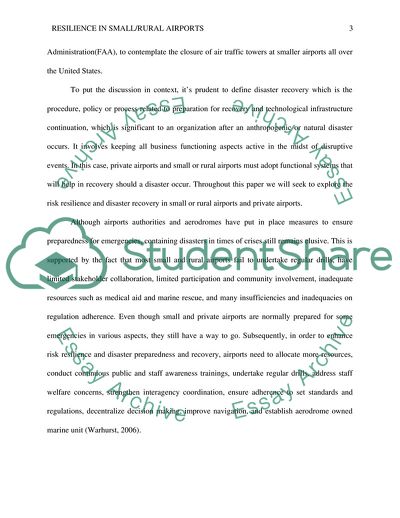Cite this document
(Resilience in Small or Rural Airports Coursework Example | Topics and Well Written Essays - 2500 words - 2, n.d.)
Resilience in Small or Rural Airports Coursework Example | Topics and Well Written Essays - 2500 words - 2. https://studentshare.org/military/1797299-building-and-maintaining-resilience-in-smallrural-airports-and-their-ability-to-recoverrespond-from-disaster
Resilience in Small or Rural Airports Coursework Example | Topics and Well Written Essays - 2500 words - 2. https://studentshare.org/military/1797299-building-and-maintaining-resilience-in-smallrural-airports-and-their-ability-to-recoverrespond-from-disaster
(Resilience in Small or Rural Airports Coursework Example | Topics and Well Written Essays - 2500 Words - 2)
Resilience in Small or Rural Airports Coursework Example | Topics and Well Written Essays - 2500 Words - 2. https://studentshare.org/military/1797299-building-and-maintaining-resilience-in-smallrural-airports-and-their-ability-to-recoverrespond-from-disaster.
Resilience in Small or Rural Airports Coursework Example | Topics and Well Written Essays - 2500 Words - 2. https://studentshare.org/military/1797299-building-and-maintaining-resilience-in-smallrural-airports-and-their-ability-to-recoverrespond-from-disaster.
“Resilience in Small or Rural Airports Coursework Example | Topics and Well Written Essays - 2500 Words - 2”. https://studentshare.org/military/1797299-building-and-maintaining-resilience-in-smallrural-airports-and-their-ability-to-recoverrespond-from-disaster.


